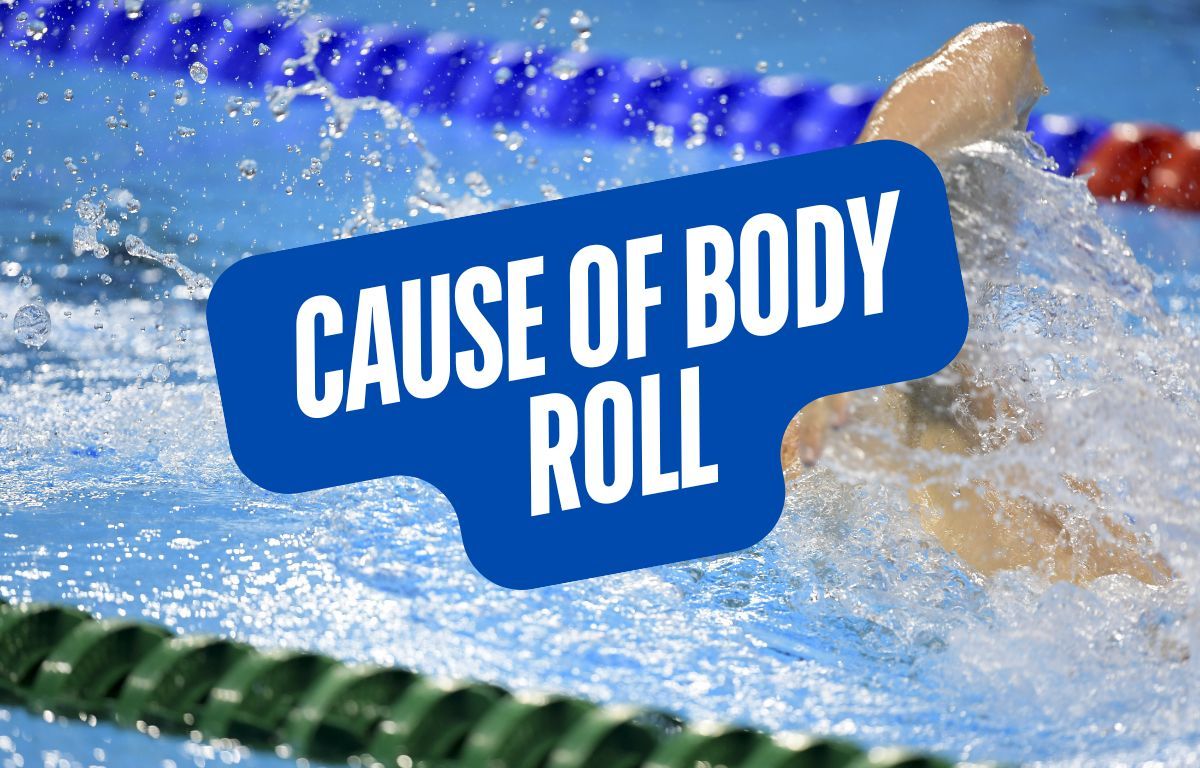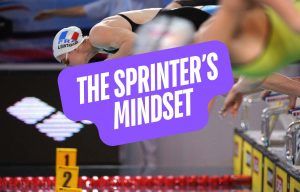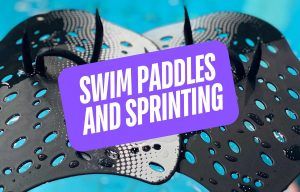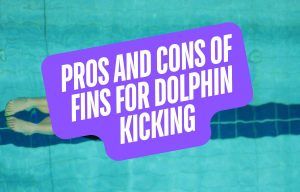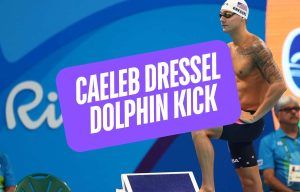Most swimmers try to force body roll. Here’s why you should rethink what causes your body to roll when swimming.
Let’s talk some more body roll when swimming freestyle!
If you’ve been following along this week, we’ve already discussed why body roll is so important as well as some ways to improve hip roll for a smoother and faster freestyle stroke.
Body roll is one of the more misunderstood—and most important—parts of swimming awesome freestyle. Good body roll elongates stroke length, reduces shoulder injury risk, and promotes a smooth and balanced stroke.
But what is the cause of body roll? What initiates it? What forces are being used and pressed against our body in order to make the rock and roll music play?
After all, if we know what initiates it, we can train ourselves to start and control it more efficiently.
Most coaches—myself included—highly recommend more core stability work and an assortment of drills to master balance and rotation.
Which help, but maybe not for the reason you think.
Here’s why.
Body Roll is Initiated by the Water
Swimmers are fighting/negotiating with the water in some form with every lap. We are trying to grip more of it with our hands while also trying to streamline ourselves to avoid causing speed-killing frontal drag.
Water is also elemental to body roll.
A study by Yanai (2001) learned that the main force that causes body roll is external torque, which is a fancy way of saying that the roll effect is largely created by water pressure pushing against your body.
Despite what our intuition is telling us, the roll isn’t initiated by the arms and legs. It’s not even initiated by the core.
“The external torque was the primary source for propelling body roll.” — Yanai (2001)
One study examined the rolling and twisting of elite freestylers (Andersen et al., 2021) and found significant lags of 400-600ms between the twist of the torso and core muscle activation.
This indicates that the core is more of a brake than a gas pedal when rolling the body.
Fun Fact: Breathing plays a huge role in how much you roll when swimming freestyle. For example, a study by Barden and Barber (2022) found that elite swimmers rolled almost 10° more to their preferred side when swimming sub-maximal freestyle.
Let the Water Move You
Yanai’s analysis revealed that turning force was created when water flows over curved surfaces of the body, with water pressure pushing unevenly across the body and generating natural rotation around the long axis.
Here’s an example of how this looks: Imagine yourself standing riverside with a kayak. The water in the river is flowing by at a decent pace. You place the kayak in the water. If it’s on a slight angle, the force of the water pushes against one side of the kayak more than the other, causing it to twist.
You didn’t twist or turn the kayak, the water did.
Same for us when swimming. As we propel ourselves across the length of the pool, water flows over the curved surfaces of our body (our “kayak”), particularly the shoulders and trunk, and creates pressure differences that naturally rotate you.
This is a key concept because it should change your mindset from trying to force roll and rotation to focusing more positioning and balancing your body well and letting the water do the heavy lifting for you.
It’s this water pressure that initiates and gets the roll, well, rolling.
The Bottom Line
This can be a tough concept to grasp for swimmers who are used to focusingon the hips and core to roll properly.
And don’t worry, all that core work and balancing drills were not for naught.
Big picture: water creates the roll but it’s the body that manages it.
Like the kayak that gets twisted sideways, the water will push us around. Our body’s job is to control and finesse that roll and rotation so that we move forward.
The core, hips, arms, and legs work in concert to control, modulate, and time your body roll.
Water starts the roll.
You manage it.
More Freestyle Technique Resources
The Most Common Freestyle Technique Mistakes (and How to Fix Them). Ready to take your freestyle technique to the next level? Here’s a look at the most common freestyle technique errors and some drills and tips to fix them.
10 Freestyle Drills for a Faster Freestyle. Ready to swim more efficient and faster freestyle? Power up your freestyle with ten freestyle drills from some of the best coaches and swimmers on the planet.
How to Improve Your Freestyle Pull (Plus Sample Swimming Workouts). Ready to level up your freestyle? Here’s how to improve and strengthen your freestyle pull and catch, and a couple of my favorite pull workouts.

